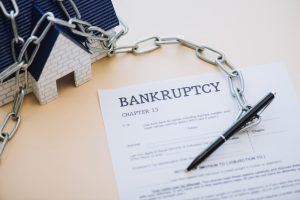
How to File for Chapter 13 Bankruptcy: A Step-by-Step Guide for Getting Started
How to File for Bankruptcy Chapter 13 in 6 Clear Steps How to file for bankruptcy Chapter 13 is a
Error: Contact form not found.
Lorem ipsum dolor sit amet, consectetur adipiscing elit. Ut elit tellus, luctus nec ullamcorper mattis, pulvinar dapibus leo.
How to file for bankruptcy Chapter 13 is a common concern for people overwhelmed by debt but hoping to keep their property. Chapter 13 offers a structured plan to repay what you owe over time while protecting your assets from foreclosure or repossession.
In this article, you’ll learn the exact steps to file, how the process works, and what to expect during your Chapter 13 case.
Filing Chapter 13 isn’t something you can rush. It involves several steps that must be followed precisely to avoid delays or dismissal.
Before filing, you must complete a credit counseling session with an approved agency. This session usually takes about 60–90 minutes and helps you understand your options.
You’ll need to provide detailed information on your:
You will use these documents to create your repayment plan and determine if you qualify.
Your bankruptcy petition includes multiple forms outlining your financial situation. After you or your attorney complete the petition, submit it to the bankruptcy court. Filing triggers the automatic stay, which immediately stops creditor harassment, lawsuits, foreclosures, and wage garnishments.
You must submit a proposed repayment plan outlining how you’ll pay back your debts over 3 to 5 years. This plan must show that:
Roughly a month after filing, attend a short hearing. The trustee and any creditors may ask questions, but you must participate, as the meeting is mandatory.
You start making payments to the trustee within 30 days of filing—even before the court confirms your plan. Once approved, payments continue until the plan ends.
To file successfully, focus on accuracy and consistency. Errors in your paperwork or missing deadlines can result in your case being dismissed.
Here’s how to increase your chances of approval:
Your plan must be feasible and follow bankruptcy laws in your state. If you meet all requirements, your debts may be partially or fully discharged at the end of the plan.
Once your plan is approved:
You’ll also need to complete a debtor education course before receiving a final discharge. This helps you learn money management skills to avoid future financial issues.
Start Today—Learn How to File for Bankruptcy Chapter 13
Need help understanding how to file for bankruptcy Chapter 13? You’re not alone. At Bankruptcy Attorneys, we connect people with trusted legal professionals who walk them through every step of the process.
Get started with a free evaluation to find out if Chapter 13 is right for your financial situation and how to move forward with confidence.
Chapter 13 repayment plans typically last 3 to 5 years, depending on your income and debt level.
Yes, but it’s not recommended. The process is complex, and errors could lead to dismissal.
Yes. The automatic stay stops foreclosure and gives you time to catch up on missed payments.
You can include secured debts, unsecured debts, and certain priority debts like taxes or child support.
Possibly, but it may affect which debts are discharged. Speak with your attorney before making early payments.

How to File for Bankruptcy Chapter 13 in 6 Clear Steps How to file for bankruptcy Chapter 13 is a
| Cookie | Duration | Description |
|---|---|---|
| cookielawinfo-checkbox-analytics | 11 months | This cookie is set by GDPR Cookie Consent plugin. The cookie is used to store the user consent for the cookies in the category "Analytics". |
| cookielawinfo-checkbox-functional | 11 months | The cookie is set by GDPR cookie consent to record the user consent for the cookies in the category "Functional". |
| cookielawinfo-checkbox-necessary | 11 months | This cookie is set by GDPR Cookie Consent plugin. The cookies is used to store the user consent for the cookies in the category "Necessary". |
| cookielawinfo-checkbox-others | 11 months | This cookie is set by GDPR Cookie Consent plugin. The cookie is used to store the user consent for the cookies in the category "Other. |
| cookielawinfo-checkbox-performance | 11 months | This cookie is set by GDPR Cookie Consent plugin. The cookie is used to store the user consent for the cookies in the category "Performance". |
| viewed_cookie_policy | 11 months | The cookie is set by the GDPR Cookie Consent plugin and is used to store whether or not user has consented to the use of cookies. It does not store any personal data. |